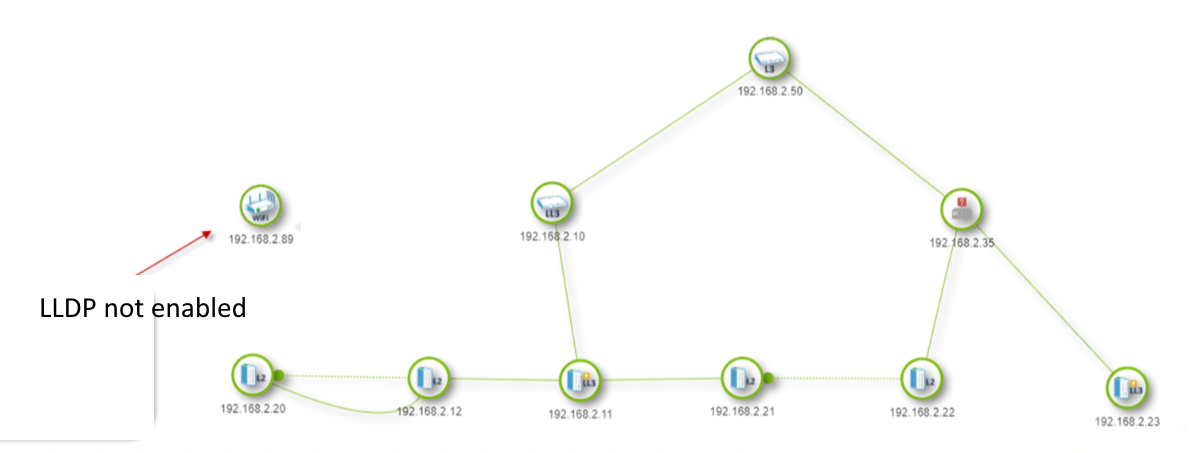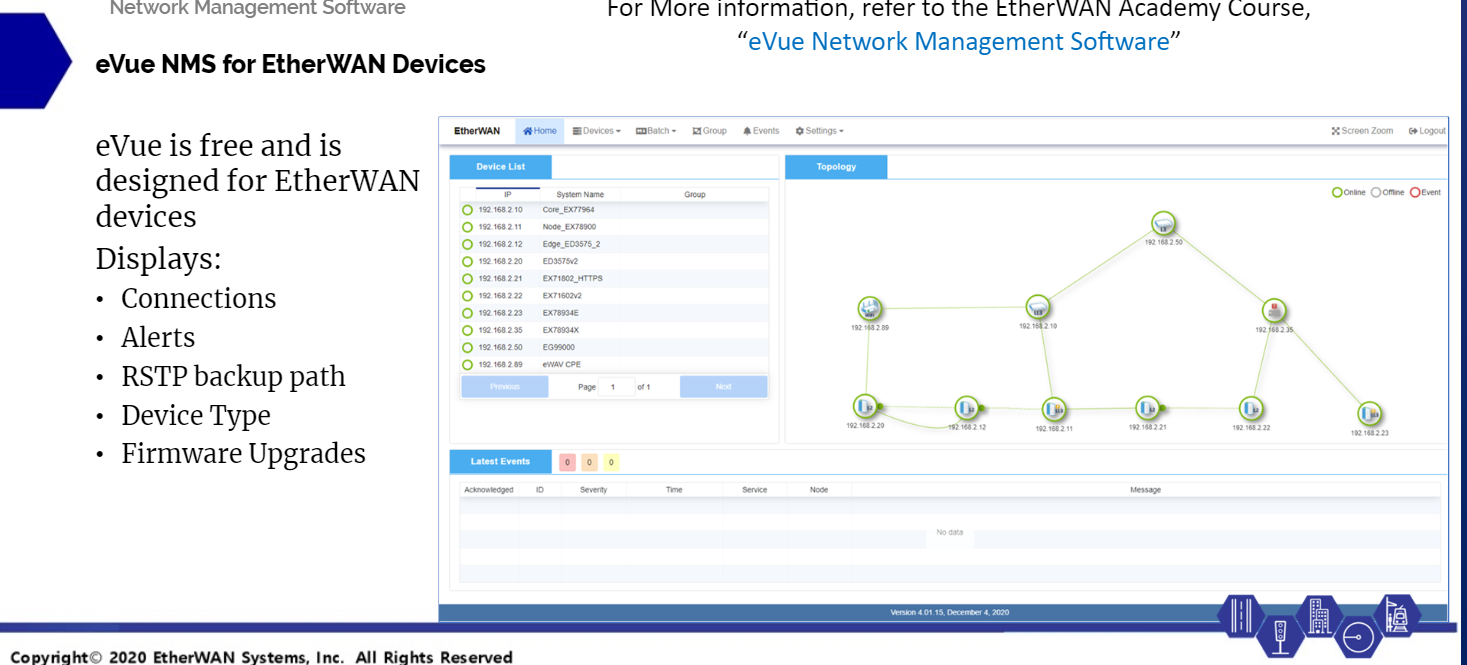Visualizing the Network with NMS
Network management systems (NMS) are applications that allow administrators to manage independent software and hardware components of a network. The key benefit of NMS is to make widely dispersed network assets manageable from a single location. Network visualization is the practice of creating and displaying graphical representation of the relationships (edges or links) between network devices. NMS delivers not only network visualization, but also information on device status, traffic, failures, and firmware. These functions and features are made possible by LLDP and SNMP.
Making the decision to utilize network management software can involve several possible motives and desired outcomes, which may depend on the type of institution (enterprise, utility, education, etc.). These include:
Optimized bandwidth
Prioritization of network traffic based on importance increases the performance of application and data communication. Institutions can monitor how network bandwidth is utilized by devices, users, and applications. Policies to optimize bandwidth can be created and enforced to improve the overall data flow on the network.
More robust security
Network management and monitoring can discover irregularities in real-time, and instantly send notifications to the relevant staff. This can help administrators to prevent and repair both human and software-based attacks.
Lowered costs
The costs of unplanned system downtime, as well as diagnostics and repairs can be markedly offset by an effective NMS. The ability to monitor network assets, performance, and existing inefficiencies leads directly to reduced costs.
Scalability
As a business or other institution grows over time, network scalability provides the needed flexibility to expand and improve. Effective network management systems make it easier to add new devices, users, and policies.
The Power Behind Network Management Systems: SNMP and LLDP
Simple Network Management Protocol (SNMP)
Simple Network Management Protocol (SNMP) is a widely used protocol for collecting and organizing information about managed devices on IP networks, and for modifying that information to manage devices. SNMP is widely used in network management for network monitoring, and supported devices include cable modems, routers, switches, servers, workstations, and printers. SNMP exposes management data in the form of variables on the managed systems organized in a management information base (MIB) which describe the system status and configuration. These variables can then be remotely queried and sometimes manipulated by various applications. For switches, these variables include device type (Layer 2, Layer 3 switch), manufacturer, model, firmware version, ports, port status, and location. SNMP also has “trap” functionality, which is the ability to actively report any detected changes.
SNMP Operation
SNMP works using three command types:
GET - GET commands come from the NMS or user, and request information from the switch such as model, port info, etc.
INFORM/TRAP - These commands come from the switch, updating the NMS on status or alerts. The INFORM command also includes a notification to the switch that the change was received.
SET - The SET command tells the switch to change a value. The SET command should usually be disabled to prevent unauthorized or malicious changing of the switch configuration.

There are three versions of SNMP:
SNMPv1:
This is the first version of the protocol, which is defined in RFCs 1155 and 1157. It provides only basic information.
SNMPv2c:
This is the revised protocol, which includes enhancements in protocol packet types, transport mappings, and MIB structure elements. It is defined in RFC 1901, RFC 1905, and RFC 1906.
SNMPv3:
This latest version adds encryption and authentication functions. It is defined by RFC 1905, RFC 1906, RFC 2571, RFC 2572, RFC 2574, and RFC 2575.
Link Layer Discovery Protocol (LLDP)
This is the revised protocol, which includes enhancements in protocol packet types, transport mappings, and MIB structure elements. It is defined in RFC 1901, RFC 1905, and RFC 1906.
LLDP is a link layer protocol used by network devices for advertising their identity, capabilities, and neighbors on a local area network based on IEEE 802 technology, mainly Ethernet networks.
LLDP Information includes:
- System name and description
- Port name and description
- VLAN name
- IP management address
- System capabilities (switching, routing, etc.)
- MAC/PHY information
- MDI power
- Link aggregation
LLDP significantly aids in the deployment of any network device that supports the protocol. As a media independent protocol intended to be run on all IEEE 802 devices, LLDP may be used to discover routers, bridges, repeaters, WLAN APs, IP telephones, network camera or any LLDP-enabled device, regardless of manufacturer. Since LLDP runs over the data-link layer only, a switch running one network layer protocol can discover and learn about an access device running a different network layer protocol.
LLDP provides useful information about the connections between devices:

LLDP is very important for network visualization, because it tells the NMS how to construct the topology map.

eVue NMS for EtherWAN Devices
The eVue network configuration and monitoring tool simplifies device management, allowing system administrators to monitor and maintain multiple EtherWAN devices on a local or wide area network. With the ability to send notifications by email based on selected levels of severity, eVue provides up to the minute information on critical systems. The software can discover EtherWAN switches and wireless devices on a network and subnets, and display an intuitive visual representation of the network topology.

eVue - Network Management Software
Key features of eVue include:
- Intuitive GUI (web-based graphical user interface)
- Automated network discovery and topology visualization
- Server-Client operation to ensure system scalability, reliability, and real time status
- Event handling via polling and SNMP trap
- Notifications sent-out via email and SNMP trap
- Device configurations via SNMPv1/v2/v3, Web, Telnet, and SSH






